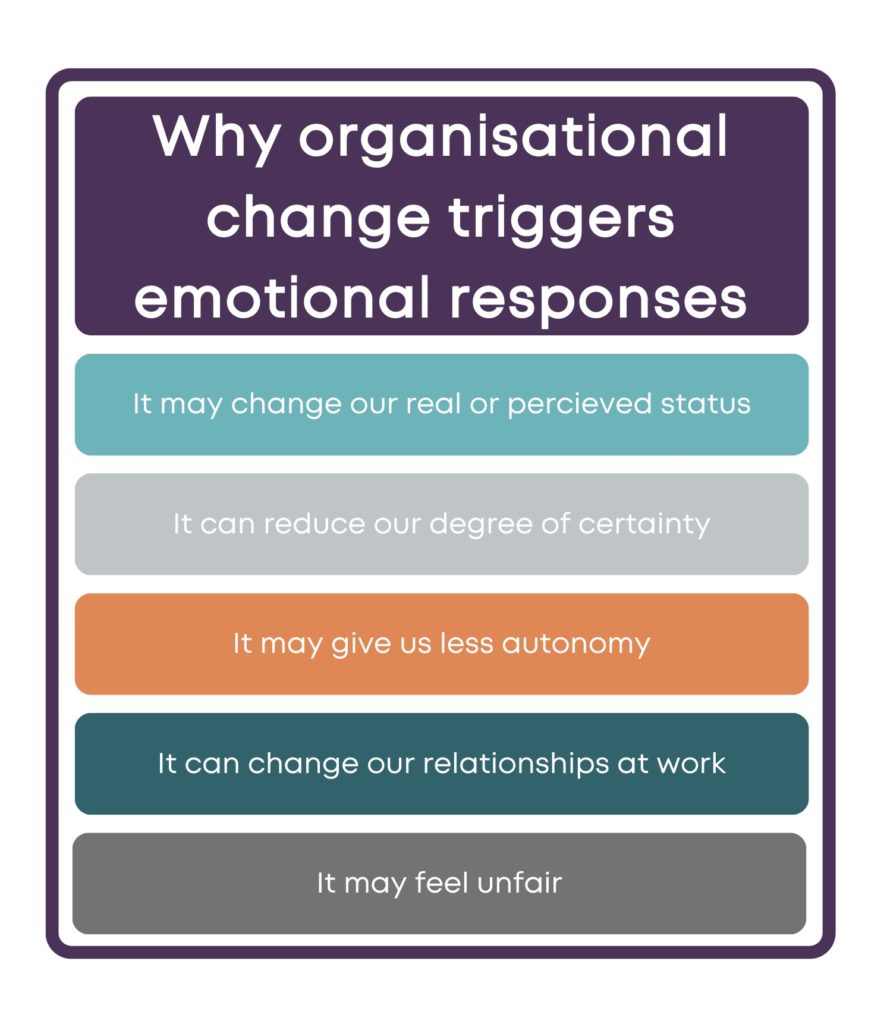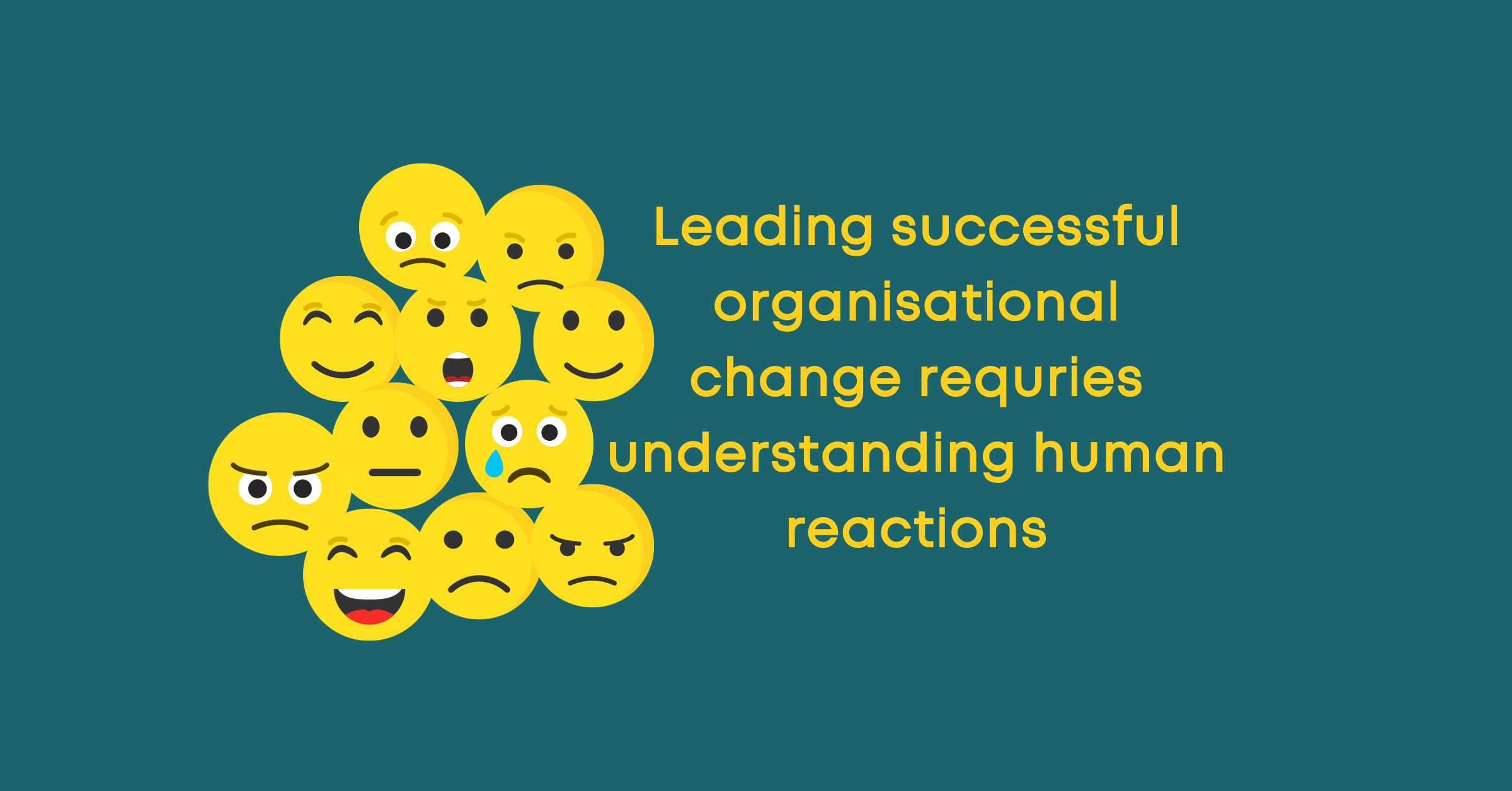As leaders we are always communicating some sort of change to our teams. Whether it’s a big or small change it’s useful to know what change can trigger for people and how to help others navigate their reactions.
The SCARF Model was developed in 2008 by David Rock* as a way of understanding our emotional reactions to change.
SCARF stands for the five factors that influence our behaviour:
Status – our relative importance to others
Certainty – our sense of things being sure, known and predictable
Autonomy – our sense of control over events, our freedom and independence
Relationships – how safe, connected and comfortable we feel with others
Fairness – how fair we perceive things to be

In any reaction to change, one or more of these hot buttons has been triggered. It’s the job of the leader to consider these in advance of any organisational change, specifically:
- Which buttons are going to be pressed for this particular person/group with this particular change
- How to mitigate the impact
- Which factors stay the same or get better
Let’s take each one at a time.
Status: This is triggered by promotions, sideways moves, new leaders coming in, and generally any type of re-organisation of reporting lines or role responsibilities. Status isn’t just about reporting lines though, it’s also about how individuals are viewed among their peers and by their line managers. If someone is at risk of feeling a loss of status (or a comparative loss of status) then find other ways to make them feel important, in a way that suits them as an individual.
Certainty: change is uncertain. Some people may be excited by uncertainty, but most people feel a degree of anxiety when things are uncertain. Typically, there are some things that are certain in every change (e.g. current tasks or the values and culture of the organisation) even when lots of other aspects are changing. Being able to communicate what stays the same is just as important as communicating what is going to change.
Autonomy: refers to the degree of freedom we have to make our own decisions, organise our work, and do things our own way. If organisational change means doing different things or with different people. This can be managed by reaffirming decision rights and accountabilities and giving people a say in how the change will be managed and rolled out.
Relationships: any movement of reporting lines or team boundaries affects relationships. Even when relationships have not been working well there is still discomfort when they change. Be careful not to overlook the impact of relationships lost when people move on, or new team members join, it’s not always just about the relationship with the team leader. Carefully integrating new team members and being aware of the need for a team to go back to a “forming” stage of team development is important.
Fairness: probably the most overlooked of the triggers in any change. We have a reaction to unfairness that is so deep it’s shared not just among humans but with primates and other mammals too. Unfairness hurts us; it triggers pain receptors in our brains. One of the easiest ways to tackle this is to clearly explain the rationale for change and how fairness was a key factor in the decision made. People may benefit from understanding why this perceived “unfair” event is fair when a different perspective or a bigger picture view is taken.
We all have an emotional and non-emotional reaction to change. To be able to express, and think about, the change from a non-emotional perspective we need to work through our emotional reactions first. This takes time and is helped by leaders who understand the process of reacting to change. Only when our emotional response has settled (and this can take between minutes and months) can we begin to see the full picture of the pros and cons of the change being presented to us.
As a leader, before you communicate change go through the SCARF list and consider which of the elements are most likely to be triggered. Then adjust your communication accordingly. Do this at an organisational level and at an individual level, as the triggers are not necessarily the same for each person.
If you need to lead change more effectively or to arrange some change leadership coaching, contact me at Sarah Robertson Consulting or book a discovery call
* Rock, D. (2008). SCARF: A brain-based model for collaborating with and influencing others. Neuroleadership Journal, 1, 1–9.


